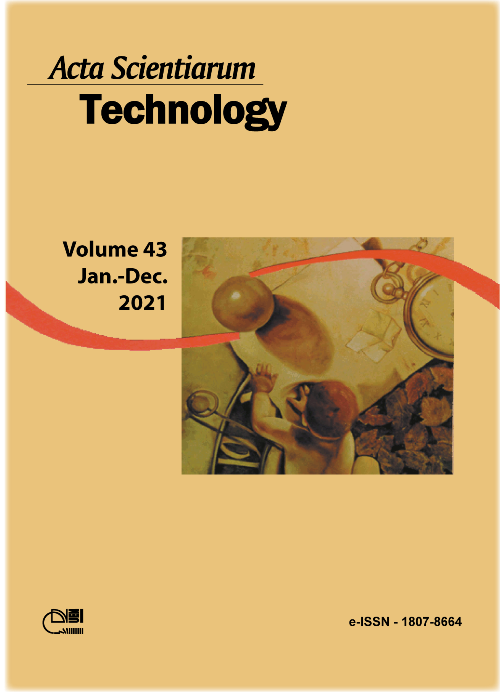Adsorption of Cd (II), Pb (II) and Cr (III) on chemically modified Euterpe Oleracea biomass for the remediation of water pollution
DOI:
https://doi.org/10.4025/actascitechnol.v43i1.50263Palavras-chave:
biosorption, water contamination, metals adsorption, water treatment.Resumo
This study evaluated the use of Euterpe oleracea endocarp after chemical modification with H2O2, H2SO4 and NaOH for the removal of Cd2+, Pb2+ and Cr3+ from water. Therefore, the adsorbent was characterized for its chemical composition, Fourier Transform Infrared (FTIR) analysis, Scanning Electron Microscope (SEM) images, and pH of point of zero charge (pHPZC), thermal stability and porosimetry. Adsorption tests were conducted by using a Central Composite Design (CCD). Pseudo-first order, pseudo-second order, Elovich and intraparticle diffusion models evaluated the adsorption kinetics, and sorption isotherms were linearized according to Langmuir, Freundlich and Dubinin-Radushkevich. The effect of initial concentration, temperature in the process and the desorption were also analyzed. SEM results showed that the açaí adsorbents (or CA) had irregular and heterogeneous structure, and IR analysis evidenced the presence of hydroxyl, aliphatic, phenolic and carboxylic surface groups; both analyses indicate favorable adsorption characteristics. The pHPZC of the adsorbent is 4.41, 4.02 and 7.10 for CA modified with H2O2, H2SO4 and NaOH, respectively. The optimum adsorption conditions were pH 5.0, within 40 min, with 4 g L-1 as the ideal adsorbent dose. The predominance of chemisorption occurs, in mono and multilayer. The adsorption is only spontaneous for Cd2+ at 15 and 25°C. The CA has the potential to increase the removal efficiency of Cd, Pb and Cr, when chemically modified, particularly with H2O2 and H2SO4.
Downloads
Downloads
Publicado
Como Citar
Edição
Seção
Licença
DECLARAÇíO DE ORIGINALIDADE E DIREITOS AUTORAIS
Declaro que o presente artigo é original, não tendo sido submetido í publicação em qualquer outro periódico nacional ou internacional, quer seja em parte ou em sua totalidade.
Os direitos autorais pertencem exclusivamente aos autores. Os direitos de licenciamento utilizados pelo periódico é a licença Creative Commons Attribution 4.0 (CC BY 4.0): são permitidos o compartilhamento (cópia e distribuição do material em qualqer meio ou formato) e adaptação (remix, transformação e criação de material a partir do conteúdo assim licenciado para quaisquer fins, inclusive comerciais.
Recomenda-se a leitura desse link para maiores informações sobre o tema: fornecimento de créditos e referências de forma correta, entre outros detalhes cruciais para uso adequado do material licenciado.



















